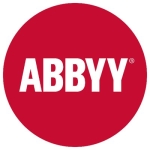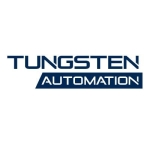What is our primary use case?
We primarily use the solution for automation purposes. It can offer an alternative desktop option, and therefore it can automate a lot of stuff. It's part of the application. It also can connect us to a number of data sources and that helps us a lot. However, it's difficult to get into specifics due to client privacy.
What is most valuable?
It's a very stable product. We find it to be quite reliable.
The solution is very easy to use. There's a bit of familiarity with the product due to the interface they have. We use other Microsoft Office products, for example, and it has a similar look and feel that's recognizable if you are familiar with the Microsoft Suite.
The look and feel and user interface make training new users a fairly easy process.
The solution offers a variety of very good features.
There is an exhaustive amount of templates that users have access to.
What needs improvement?
You do need to either get a bit of IT support or do a bit of coding in order to implement the solution successfully.
Something lacking is Microsoft Office plugin, however, it's my understanding that their Office plugin is out now or coming soon. We're just trying to understand the use case.
If they can make it integrated into Microsoft's Office Suite, that would be great. It would be better than lining it up with the Office plugin application. I'm sure it exists in some form, however, maybe not for the mainstream things.
The solution is still maturing very quickly and it's going to take no time for this to be Enterprise RPA.
For how long have I used the solution?
I've used the solution for the last year and a half or so.
What do I think about the stability of the solution?
The solution is stable. There aren't really any bugs or glitches. It doesn't crash or freeze. It's good.
What do I think about the scalability of the solution?
The solution is very scalable. As a cloud product, it makes it very easy for users to expand if they need to. When a company needs to scale, they can do so, no problem.
We do plan to continue to use this solution, and we'll continue to use other Microsoft solutions as well.
How are customer service and technical support?
We end up using a lot of community resources. Microsoft has a huge community, and it's really helpful in terms of finding answers and asking questions.
Which solution did I use previously and why did I switch?
I've used the previous generation of this technology, such as Logic Apps and other products of that nature.
We didn't use any other products really. We had some in-house and also some VBA Macros, PowerShell scripts and others which we had created. However, this was the first proper solution we've invested in.
How was the initial setup?
The initial setup is pretty straight forward. It's not overly complex. You do need a bit of IT support, however, you could put it in and save it and other people can use it and probably tweak it quite easily.
While there is a bit of coding needed, once you have everything set up, there are lots of templates that make the implementation of different processes very easy.
The deployment is quick. There's just a bit of needed configuration with the cloud. We didn't activate all of the features; we only activated what was required. I can't recall the exact amount of time it took to do this.
What was our ROI?
It is fast to implement, does not depend on the changes to existing systems to implement. It save hours that a team spend on performing the process manually. Mostly importantly it is easy to training business users since users are very much familiar microsoft and windows interface (UI).
What's my experience with pricing, setup cost, and licensing?
The licensing set up depends on your organization. If it's an enterprise, it's based on their user department and how do you want the solution to be distributed.
Many companies already have Microsoft Office licenses, for example, and this is part of that.
It's not too expensive as a license. At least, that's my understanding.
In comparison, an RPA tool with Outreach costs $5,000. You can use it, however, it's expensive.
What other advice do I have?
I'm using the latest version of the solution.
We are a consulting organization, and we do help clients.
We've helped large organizations. We don't have just one use case for this product. We have many.
You can't build an application with this solution. This is more for automating within a department or in an area, for example, a finance area, where they have all sources lined up and it takes almost three or four days for an accountant to go through the data to create templates and updating templates, etc. Those kinds of things. This solution makes the processes happen faster.
I'd recommend the solution to other organizations.
I would rate the product at an eight out of ten. There's a bit more maturity that needs to happen, however, all of the elements are there to make for a great product.
Which deployment model are you using for this solution?
Public Cloud
Disclosure: My company has a business relationship with this vendor other than being a customer: Partner

















